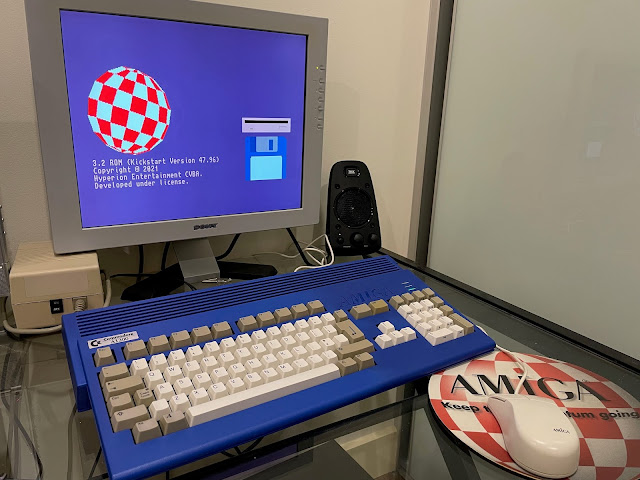

The command line interpreter (Shell / CLI) known from Unix and Linux is also no stranger to the Amiga. library) and supports many concepts of modern operating systems (streams, pipelining, signals, message queues etc.). device) as well as shared libraries (suffix.
#AMIGA WORKBENCH ROM DRIVERS#
The Amiga has dynamically reloadable device drivers ( suffix. The speed of the OS has even been increased over the years through various improvements - in contrast to the competition.ĪmigaOS, the operating system of the Amiga, has a modular structure and has various similarities to concepts known from Unix. The lack of isolation of the processes under AmigaOS from one another ("Memory Protection") enabled fast interprocess communication by simply transferring pointers without copying data, but this meant that any program could crash the entire system in the event of an error.
#AMIGA WORKBENCH ROM WINDOWS#
The input fields, buttons and click boxes in intuition windows are called Amiga gadgets (German: "symbols"). The whole system is so flexible that applications can make use of the basic features like windows and other graphic elements without loading the workbench. for file management and program calls, as well as general window management. As with other operating systems, the workbench is used for the graphical version of a command line, i.e. In intuition, elements such as icons (in Amiga called “pictogram”), Windows (windows) etc. The part of the AmigaOS for realizing the graphical user interface is called intuition, so the user desktop called Workbench is implemented as the first application. In the parlance of Amiga users, the separation has persisted (the ROM is Kickstart, everything else that is loaded from a data carrier is Workbench), although it is not entirely accurate in terms of content, since the division of the system components between ROM and hard disk is different in later versions the operating system has changed significantly.ĪmigaOS - and thus also the Workbench - offers a graphical user interface in color, with multitasking and relatively short response times e.g. Later Amiga models (from the 1987 published Amiga 500 and Amiga 2000 ) had the contents of Kickstart in ROM, only the Workbench disks are loaded, it had to. The entire operating system of the Amiga thus initially fit on two floppy disks, the Kickstart disk (on which 256 KiB were written) and the Workbench disk with 880 KiB capacity. The second floppy disk was called Workbench, after booting with this disk the system was available. The first floppy disk required for booting was called Kickstart and contained the operating system kernel, DOS and some system libraries, which also included the necessary graphics. It does not store any personal data.The Amiga operating system ( AmigaOS ) was delivered in several parts on floppy disks for the first Amiga (the Amiga 1000 ). The cookie is set by the GDPR Cookie Consent plugin and is used to store whether or not user has consented to the use of cookies. The cookie is used to store the user consent for the cookies in the category "Performance". This cookie is set by GDPR Cookie Consent plugin. The cookies is used to store the user consent for the cookies in the category "Necessary". The cookie is used to store the user consent for the cookies in the category "Other.

The cookie is set by GDPR cookie consent to record the user consent for the cookies in the category "Functional". The cookie is used to store the user consent for the cookies in the category "Analytics". These cookies ensure basic functionalities and security features of the website, anonymously.


Necessary cookies are absolutely essential for the website to function properly.


 0 kommentar(er)
0 kommentar(er)
